Regional News
Synthetic Drug Escalation a New Threat for Asia Communities

Thai policemen display some of 226 kilograms (498 pounds) of crystal meth and 8 kilograms (18 pounds) of heroin during press conference in Bangkok ,Thailand
–
CHIANG RAI – The United Nations says it sees an escalation in the production and use of amphetamines and synthetic drugs as a new threat for communities in Asia.
In northern Thailand’s Chiang Rai province, the weekend seizure of almost two million methamphetamine pills came as traffickers attempted to breach a police checkpoint.
One trafficker was shot dead as a combined force of soldiers and police confronted the traffickers near in the infamous Golden Triangle region of Thailand, Laos and Myanmar.
News of such large seizures of methamphetamines and potent synthetic drugs and heroin come with increasing frequency, even for a region long known at the frontline of drug trafficking.
A recent assessment by The United Nations Office on Drugs and Crime (UNODC) highlighted a massive escalation in methamphetamine production and seizure rates.
“A total of 287 million methamphetamine tablets were seized in East and South East Asia in 2015, a more than two-fold increase compared to 2011,” the UN report said.

Methamphetamine – known in Thai as ‘ya ba’ – has long been a staple in the illegal drugs trade.
–
But synthetic drugs, also known as new psychoactive substances, are also evident and a major contributor to a drug overdose epidemic.
The UNODC said Myanmar, Laos, Cambodia and Vietnam had also “perceived an increase in the use of methamphetamine tablets in 2015”.
Cambodia, China, the Philippines, Singapore, and Vietnam also all reported increases in use and trafficking of crystalline methamphetamine – a liquid form of the drug that is injected.
The production and trafficking of methamphetamine and heroin within and from the region generates an estimated $40 billion annually and UNODC data show the flow of illicit drugs continues to rise across the Greater Mekong Subregion.
Methamphetamine – known in Thai as ‘ya ba’ – has long been a staple in the illegal drugs trade.
The new threats in synthetic drugs include fentanyl, which the U.S. National Institute on Drug Abuse (NIDA) says is “50 to 100 times” more potent than opioids such as morphine.
From clandestine laboratories in Asia, synthetic drugs reach markets as far away as North America, where the U.S. is witnessing up to 60,000 deaths a year from opioid drug overdoses.
Inshik Sim, a UNODC information analyst in Thailand, said the trends towards synthetic drugs are “alarming.”
“If you compare seizures of drug types between the opiates and synthetic drugs, basically seizures of methamphetamine increased by nearly sevenfold over the last decade – while those of heroin are virtually stable,” Sim told VOA.
He said increases in methamphetamine use have also raised concerns in China, Singapore, and Malaysia.
“Overall at the regional level now we can say that methamphetamine has become the primary drug of concern in the region,” he said.
Olivier Lermet, a UNODC regional advisor, said the factors driving the escalation in amphetamine type stimulants (ATS) use reflect changing economic circumstances.
Lermet, in an email to VOA, said ATS drugs were easy to produce, with clandestine laboratories based at strategic locations close to markets, “plus the increased inter connectivity of the ASEAN region enables a fast flow of goods and persons.”
An emerging middle class and rising incomes have also led to “more consumers” – both in urban and non-urban regions – with consumption by men and women, and not limited to the youth market.
The UNODC said crime syndicates, including those in northeastern Myanmar and eastern China as well as in Taiwan, play “a significant role in methamphetamine manufacturing and trafficking in the region.”
Traffickers target high income markets, such as Japan, South Korea, Australia and New Zealand. “In fact, seizures of crystalline methamphetamine at the borders of these four nations have increased rapidly in recent years,” the UNODC said.
The UN has led calls for countries to take on a more “balanced response to drugs, with a robust health pillar as a fundamental element of national policies. ”
But Southeast Asia has been slow to adopt reforms and has doubled down on the so-called “war on drugs.”
In the Philippines under President Rodrigo Duterte, more than 7,000 people have been killed by police and unidentified gunmen.
In Thailand up to 70 percent of all 300,000 prisoners in jail have been sentenced on drug related charges and Indonesia has declared a “narcotics emergency.”
But civil society groups say there is need for reform to combat drug use.
They say existing programs of compulsory centers for drug users (CCDUs) should be phased out towards comprehensive systems of voluntary community-based treatment and complimentary health, harm reduction and social support services.
In Thailand’s slum community of Klong Toey, Joe Maier, a Catholic priest who runs charity projects in the area, said there has been little government support to assist communities to provide alternatives against illicit drug use.
“They never have put money into anything. So it’s nothing new. They never have dumped huge amounts of money into sports. The government does not see sports fields, athletics and sport programs and sports heroes as combating drugs,” Maier said.
By Ron Corben

Regional News
Thai Immigration Police Detain Over 26,000 Illegal Migrant Workers
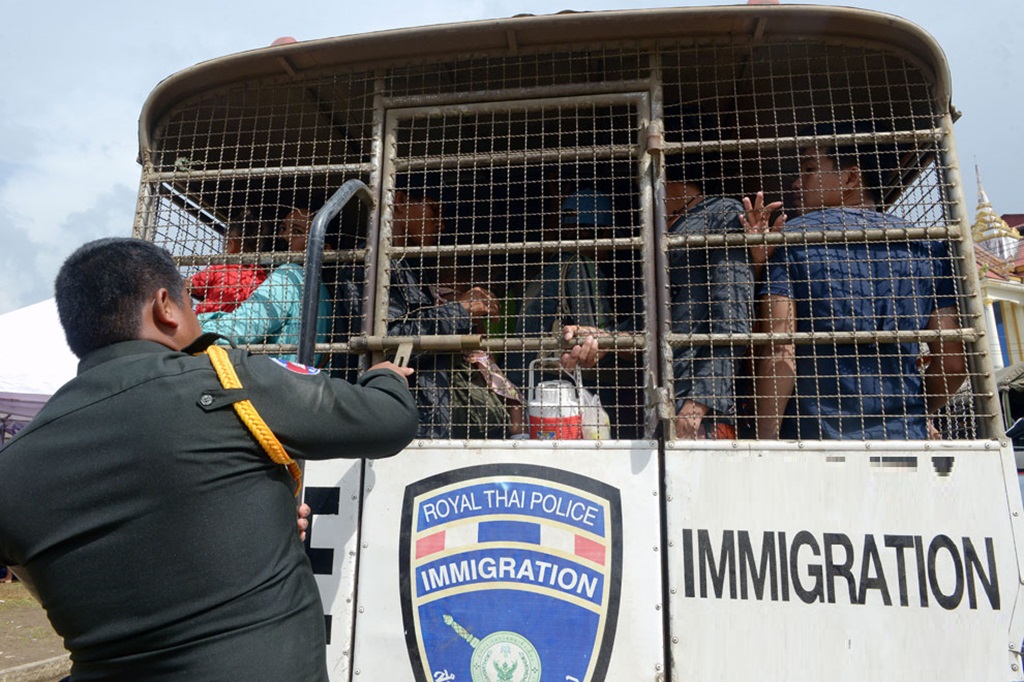
Thailand’s Immigration Police have detained approximately 26,000 illegal migrant workers from Laos, Myanmar, and Cambodia during an eight-day operation in Bangkok and surrounding regions, according to a Royal Thai Police spokesperson.
Mr Adisorn Keudmeuangkhon of the Bangkok-based Migrant Working Group said the drive was in response to an increasing number of concerns about an influx of illegal migrant labor.
“Some Thai people see that many illegal workers are competing for their job positions in the past few months,” he told me. “That’s why the ministry has to take tougher action.”
Civil strife in Myanmar and the recent implementation of a military conscription have driven thousands of Burmese into Thailand, while severe inflation and limited job opportunities in Laos have also encouraged an influx of workers from that country.
Between June 5 and 12, officials detained and checked 20,111 Myanmar laborers, 1,659 Laotian migrant workers, and 3,971 Cambodian workers, according to the Ministry of Labor.
It marked the start of a 120-day campaign to audit workplaces and arrest unlawful migrant workers, according to the government.
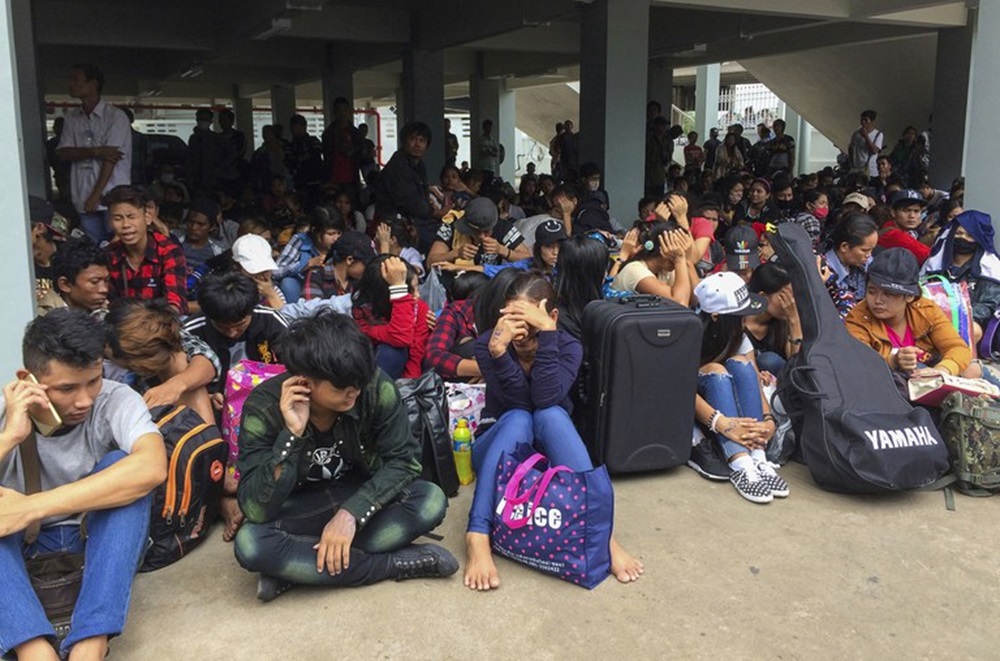
Migrant Workers to be Deported
According to Keudmeuangkhon, undocumented workers face fines ranging from 5,000 to 50,000 Thai baht (US $136 to $1,365), deportation, and a two-year prohibition on re-entering Thailand.
Authorities did not intend to file criminal charges, he claimed.
Authorities raided 1,774 workplaces, according to Moe Gyo, chairman of the Joint Action Committee on Burmese Affairs, which advocates for Myanmar labor rights.
He stated that since the military junta activated conscription, there has been an upsurge in the number of arrests of Myanmar citizens in Thailand who do not have a work permit identity card.
All men aged 18 to 35 and women aged 18 to 27 must serve in the military for at least two years. The first group of 5,000 conscripts summoned by Myanmar’s junta will start duty at the end of this month, military sources told AFP on Monday.
According to Keudmeuangkhon, the bulk of Lao migrant workers in Thailand work as fresh market shopkeepers, restaurant servers, and mall salespeople.
Most people visit Thailand as part of ASEAN’s visa-free policy for tourists, but they stay longer than the 30-day restriction once they find job.
“Employers like to hire Lao migrant workers in the service sector because they can speak fluent Thai,” he told me.
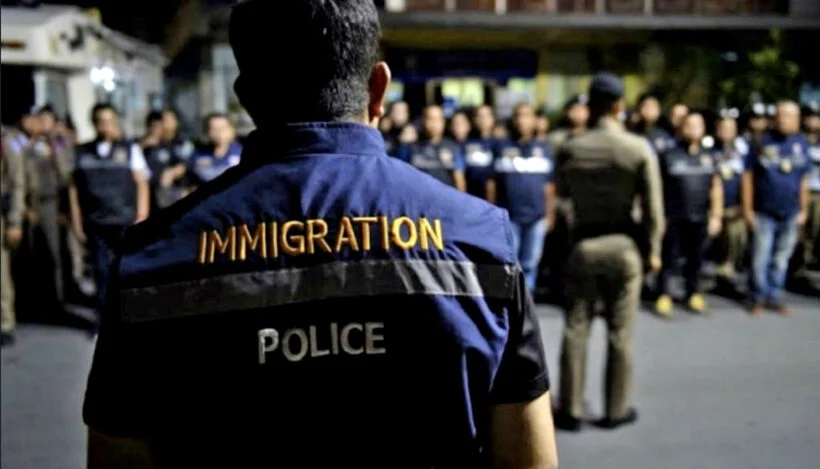
Immigration Police Detain Illegal Migrant Workers
The Thai Cabinet may approve an enhanced program for Thai employers to register their unauthorized foreign workers in July or August. Keudmeuangkhon explained.
Last month, the Thai Ministry of Labor’s Foreign Workers Administration office announced that 268,465 Lao migrant workers were officially working in Thailand.
Baykham Kattiya, Lao Minister of Labor, told Radio Free Asia earlier this month that there are 415,956 migrant workers in other nations, the majority of whom work in Thailand.
According to her, the Lao government believes that over 203,000 persons working outside of the nation lack proper work documents.
However, a Lao official familiar with the labor industry informed Radio Free Asia, a BenarNews-affiliated news station, on June 20 that the number of illegal Lao migrant workers in Thailand and abroad is likely significantly greater.
“They go to other countries as illegal migrant workers through different types of methods – as tourists or students,” said the politician. “Thus, it is hard for the immigration police to collect data on these people.”
Government Officials Responsible for Smuggling in Migrant Workers
Government Officials Responsible for Smuggling in Migrant Workers
News
High School Student Dies After Being Electrocuted By School Water Dispenser
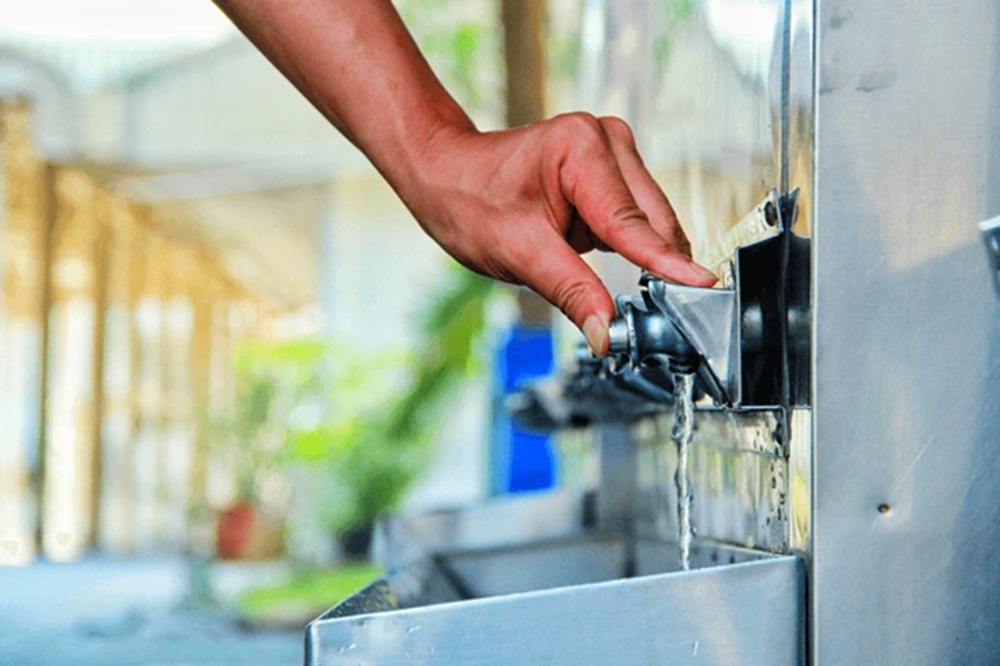
Thailand’s Office of Basic Education Commission has initiated an investigation into the electrocution of a 14-year-old student by a water dispenser in a high school. The event happened at noon on Friday, during the high school’s sports day. The victim was a Grade 8 student.
According to local media in Trang Province, the incident occurred when a teacher instructed the pupil to turn off a water dispenser amid a heavy rain.
According to a witness, the child collapsed while strolling with his friend near a water station. The friend claimed he attempted to assist but was also shocked by electricity.
According to reports, the friend then recovered, left the site, and requested assistance from teachers. A teacher ran to the scene and used a towel to pull the boy away by the ankle. He was taken to the hospital, but it was too late, they claimed.
The event sparked criticism from parents and netizens over school safety, as well as the slow response to aid the young youngster.
Mr. Chainarong Changrua, head of Trang-Krabi’s Secondary Educational Service Area Office, told local media on Sunday that forensic officers from Trang Provincial Police had visited the area. They discovered the blown breaker switch behind the water dispenser, he explained.
The breaker was burned out, thus the authorities assumed the disaster was caused by a short circuit that allowed energy to spill to a neighboring power pole. The student also appeared wet and was not wearing shoes when electrocuted.
According to the Office of Basic Education Commission, a probe team will complete its investigation this week.
The student’s father, Mr Pornchai Thepsuwan, 53, claimed he was saddened when he saw his son’s body. The boy (Wayu), was the youngest of two boys, he explained. He stated that following the tragedy, the school director and staff gave financial assistance to the families.
Mr Pornchai also said he would not seek charges against the institution because he believed it was an accident.
Electrical accidents in Thailand
Electrocution instances in Thailand have increased alarmingly in recent years. Many mishaps occur as a result of improper wiring and inadequate maintenance of electrical systems.
Public locations, such as schools and markets, frequently lack adequate safety precautions, putting individuals in danger. In rural areas, antiquated infrastructure exacerbates the situation, resulting in more frequent and serious events.
Although several high-profile cases have brought these challenges to light, genuine progress has been gradual. Furthermore, the rainy season heightens the likelihood of electrical accidents, as water and exposed wires do not mix well.
The government has made steps to strengthen safety standards, but enforcement is patchy. More education on electrical safety could help to reduce these accidents.
Unfortunately, better infrastructure and tougher rules may have prevented many of these incidents. The loss and injuries caused by electrocution are avoidable, emphasizing the need for immediate action.
Over 200 High School Students Facing Sedition Charges in Thailand
Over 200 High School Students Facing Sedition Charges in Thailand
News
Thailand’s Tourist Police Crackdown on Tourist Scammers in Pattaya
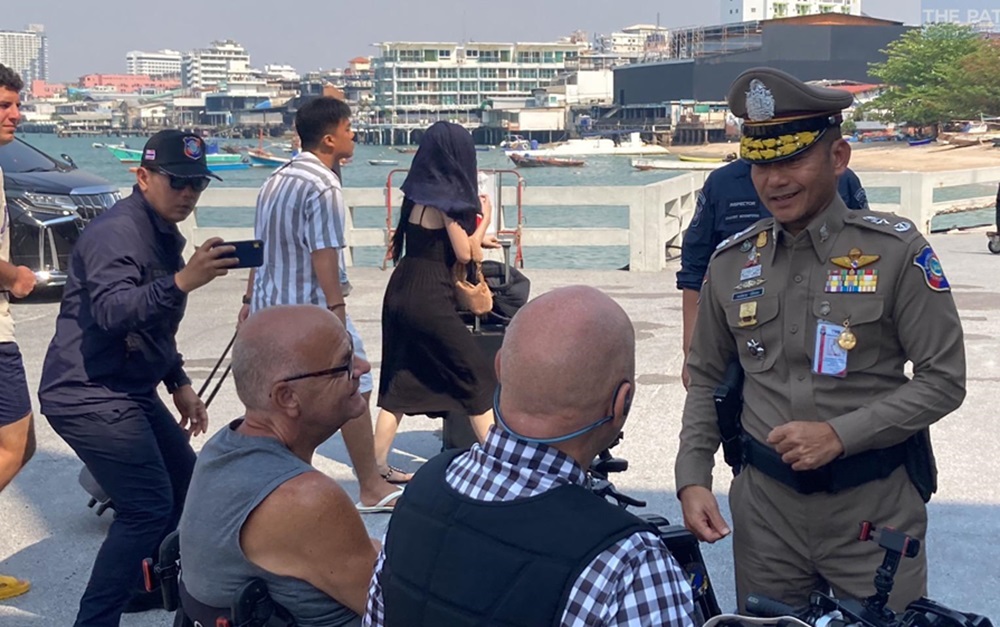
Thailand’s Tourist Police said it is collaborating with embassies from five countries to combat tourist scams and ten criminal gangs in Pattaya. The Tourist Police Bureau, convened a meeting on Thursday Pol Lt Gen Saksira Phuek-am told a press briefing.
Pol Lt Gen Saksira Phuek-am, the Tourist Police bureau commissioner said the participants included ambassadors from South Korea, Ukraine, Russia, India, and Switzerland.
He told the briefing the he had ordered a crackdown on tourist frauds, such as fraudulent or low-quality tour operators and unfair sales of goods and services. Stepped-up operations began on June 19 and will continue until June 25.
He stated that the agency was working with numerous organisations to increase tourists’ confidence in visiting Pattaya.
Gen Saksira spent time on the famed Walking Street speaking with officers on duty and assigned them to seek for members of ten criminal groups known to operate in Pattaya.
Meanwhile, Prime Minister Srettha Thavisin will visit Chon Buri on Saturday to assess the tourism situation. He intends to visit the site of a future Formula One racecourse near Khao Phra Tamnak in Bang Lamung District.
Prime Minister Srettha recently met with Formula One organisers in Italy to examine the potential of including Thailand on the race schedule in the future.
On Sunday, the Prime Minister will pay a visit to Rayong’s U-tapao airport to discuss development on the airport’s land, with the goal of encouraging investment in the Eastern Economic Corridor.
Police Chief Reinstated
In other police news, Pol Gen Torsak Sukvimol has been reinstated as national police chief following the conclusion of an investigation into a highly publicised quarrel, according to Wissanu Krea-ngam, Prime Minister Srettha Thavisin’s counsellor.
Mr Wissanu released the investigation’s findings on Thursday, after the prime minister formed a fact-finding committee chaired by Chatchai Promlert to investigate into the quarrel between Pol Gen Torsak and his deputy, Pol Gen Surachate Hakparn.
The four-month study revealed conflicts and disorder at all levels of the Royal Thai Police, but it was unclear whether these issues arose from a single cause or several causes, according to Mr Wissanu.
The findings revealed that both Pol Gen Torsak and Pol Gen Surachate were involved, with each team contributing to the tensions, he noted.
Mr Wissanu indicated that Pol Gen Surachate was reinstated as deputy national police head on 18 April following his relocation to the Prime Minister’s Office on 20 March. A disciplinary committee was formed to investigate Pol Gen Surachate, and he was ordered temporarily suspended from the police force.
Because there were no further difficulties to explore, it was decided to restore Pol Gen Torsak. He plans to retire on September 30.
On March 20, Mr Srettha abruptly transferred both top police officers to the Prime Minister’s Office in an effort to address the growing schism within the police service.
Kitrat Panphet, Deputy National Police Chief, was subsequently named Acting Police Chief. According to sources, Pol Gen Surachate could face money laundering charges related to online gaming networks.
Source: Bangkok Post
-

 News4 years ago
News4 years agoLet’s Know About Ultra High Net Worth Individual
-
Entertainment2 years ago
Mabelle Prior: The Voice of Hope, Resilience, and Diversity Inspiring Generations
-
News11 years ago
Enviromental Groups Tell Mekong Leaders Lao Dam Evaluation Process Flawed
-

 Health4 years ago
Health4 years agoHow Much Ivermectin Should You Take?
-

 Tech3 years ago
Tech3 years agoTop Forex Brokers of 2023: Reviews and Analysis for Successful Trading
-

 Lifestyles3 years ago
Lifestyles3 years agoAries Soulmate Signs
-

 Entertainment3 years ago
Entertainment3 years agoWhat Should I Do If Disney Plus Keeps Logging Me Out of TV?
-

 Health3 years ago
Health3 years agoCan I Buy Ivermectin Without A Prescription in the USA?